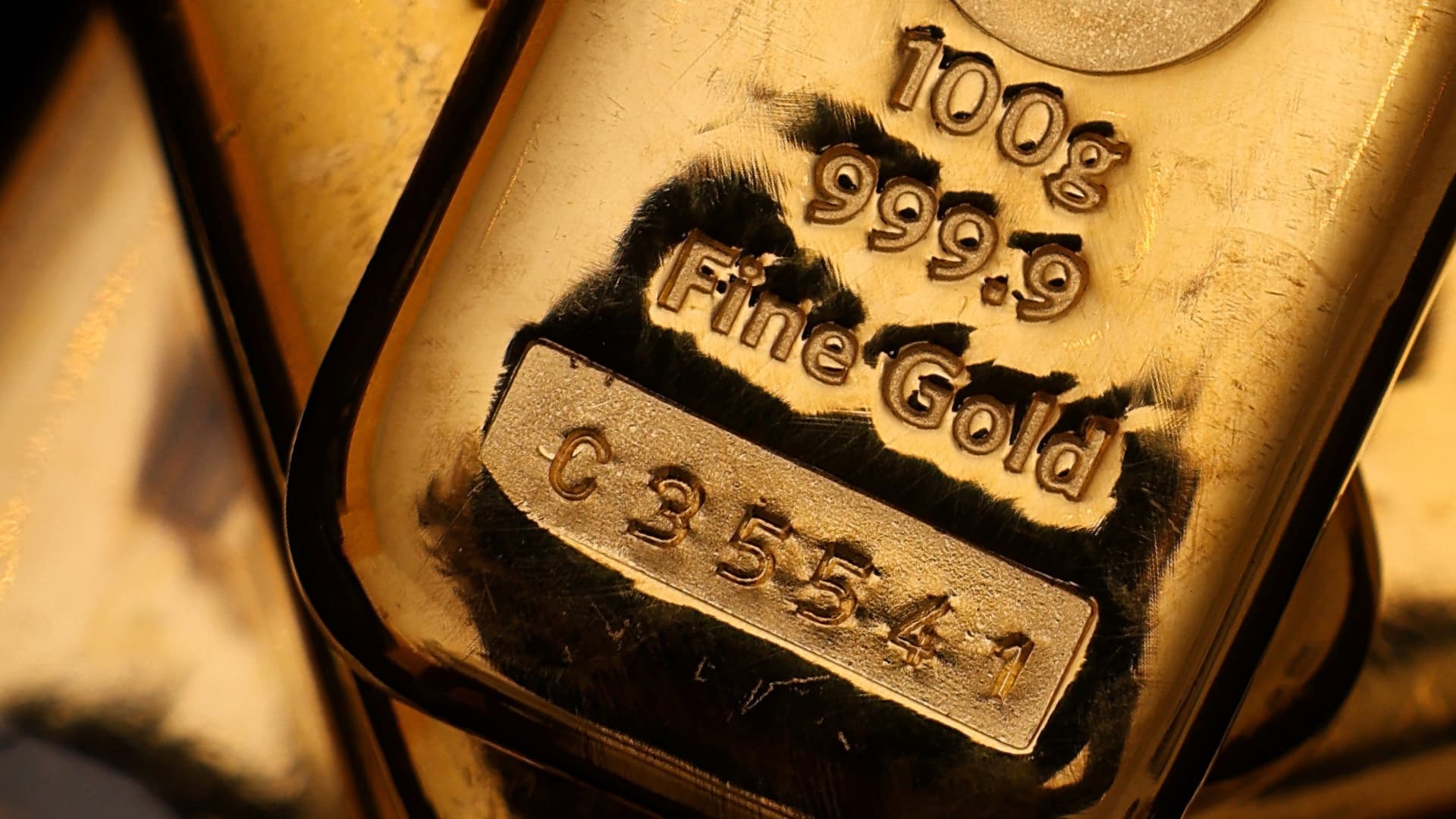While gold was taking a hit on Tuesday, the metals trade has outshined artificial intelligence on Wall Street this year, even the latter has propelled the broader stock market to record levels. Gold crossed the $4,000-per-ounce threshold earlier in October, and just this week, it hit a record above $4,300 . It’s currently up more than 50% this year. Not only that, silver is trading near record levels and has soared more than 60%. That’s despite easing trade tensions between the U.S. and China leading to a slight pullback in both metals – President Donald Trump said Monday he expects to reach a “really fair and really great” deal with Chinese President Xi Jinping in South Korea later this month. Precious metals have gained in 2025 thanks to concerns around global trade, expectations of Federal Reserve rate cuts and a drop in the U.S. dollar. But the size of those returns is unusual for gold and silver, especially when the stock market is doing well. The Nasdaq-100 is up more than 19% this year, while the the S & P 500 has climbed more than 14%, with both hitting records this year as a result of the AI investing boom. The commodity has even beaten out AI giant Nvidia’s jump of more than 34%. “The market is somewhat changing its view on gold as an asset class right now,” David Wagner, head of equity at Aptus Capital Advisors, said in an interview with CNBC. “It’s no longer just being utilized as kind of a simplistic way to hedge your currency or hedge your portfolio.” @GC.1 YTD mountain Gold futures, year-to-date Instead, investors are seeing it as a scarce asset as the ” currency debasement” trade gains momentum on Wall Street. This trade refers to investors hedging against government borrowing and money printing, lessening the U.S. dollar’s value by moving into gold and other assets. “People want to own risk assets,” Wagner said. “People want to own hard assets, given where we stand in our current debt and the debasement of currency that does occur on an annualized basis from inflation.” “The gold mentality has somewhat changed over the last few years,” he added. The run-up While gold has outpaced the broader market since the tech bubble peak in 2000, its move really became apparent in 2022, when the U.S. alongside others such as the European Union froze Russia’s central bank reserves in the wake of that country’s invasion of Ukraine . “That event woke up the rest of the world to say, ‘Hey, let me double check how much of U.S. dollar reserves I have, and maybe this is a good catalyst to reduce that exposure,’” said Peter Boockvar, chief investment officer at One Point BFG Wealth Partners. The move set off significant amounts of central bank gold buying in not only 2022 but also 2023 and 2024. That pace has since only quickened this year following Trump’s decision to impose “reciprocal” tariffs on a number of countries months ago. .DXY YTD mountain ICE U.S. dollar index, year-to-date The U.S. dollar , which has weakened in 2025, faced some pressure especially in response to the heightened uncertainty around Trump’s tariff plans. Those spurred foreign buyers to diversify away from the currency and turn to gold as an attractive alternative. Per data from Deutsche Bank, gold as a percentage of global reserve assets hit 24% in this year’s second quarter, the highest level since the mid- to late-1990s. “[In] the last couple months, all those retail and institutional investors that were selling in ’22, ’23 and ’24, now they’re seeing the price rise and [are] like, ‘Hey, let me get back in,’” Boockvar added. “We’re seeing that with the increase in ETF holdings of gold, so they’ve sort of piled on to what has already been a rally.” What’s next? Boockvar thinks that gold and other metals like silver are “probably due for a rest” in the short term after their massive gains this year. Although he still views the trade as a buy, he cautioned investors to be ready to purchase more on a pullback. Spot gold and spot silver were already running out of steam on Tuesday, sliding more than 5% and more than 8%, respectively. “We got way too extended, particularly relative to moving averages,” he said. “I’m still bullish, still very long, but I acknowledge that it’s probably ready for a digestion phase. Maybe the same for the stock market too.” Compared to AI, Baird investment strategist Ross Mayfield thinks gold’s outlook doesn’t necessarily stack up, saying that he’s “more inclined to kind of bet on the AI trade having more legs” due to a number of growth drivers, namely the narrative around AI, the earnings potential of AI-related companies, the technology’s use cases and the speed with which AI models are improving. “Not that the gold trade can’t continue to run, but gold is kind of a … known factor,” he remarked. “There are times where it does really well, but people know what gold is [and] traditionally what the narrative behind a gold story is, whereas AI still has this kind of like untapped upside.” There are others on Wall Street who are more bullish on gold from here. Louis Navellier of Navellier & Associates is one of them. He mentioned a lack of confidence in central banks and governments around the world, such as in France , as a reason for its latest advance. “A global interest rate collapse is unfolding, so central banks will have to continue to cut as deflation fears spread,” the firm’s founder and chief investment officer said. “Although the U.S. is an oasis from much of the world’s problems, gold is the best oasis amidst the chaos, so I expect gold to continue to rally.”









